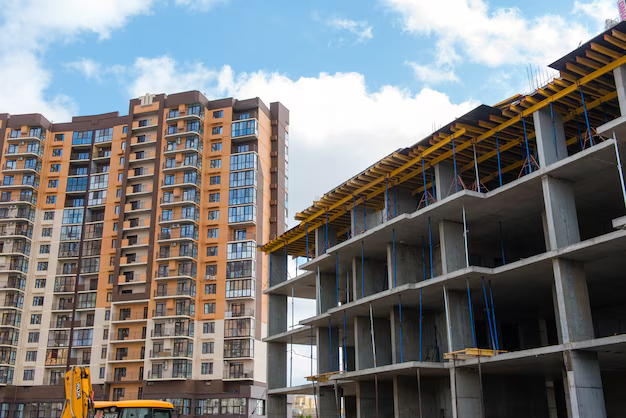Curious About the Cost to Build an Apartment Building? Here's What You Need to Know
Building an apartment building is not just a simple construction project; it’s a substantial financial undertaking that requires careful planning and a clear understanding of various costs involved. Whether you're an aspiring developer or an investor looking to dive into the real estate market, knowing what it takes financially is crucial. So, how much does it really cost to build an apartment building?
The Breakdown of Construction Costs
The cost of building an apartment building can vary widely depending on several factors, such as location, size, materials, and design complexity. On average, the cost can range from $100 to $400 per square foot. For a mid-range apartment building, which typically includes some amenities but is not particularly high-end, you might expect to spend around $200 to $300 per square foot.
Key Cost Factors:
- Location: Construction in urban areas typically costs more due to higher land and labor prices.
- Size and Scale: Larger projects can benefit from economies of scale, reducing the overall cost per unit.
- Materials: The price and availability of construction materials can significantly influence costs.
- Design and Amenities: High-end designs and facilities such as pools, gyms, or roof decks can drive up the price.
Hidden Costs Often Overlooked
While construction costs are substantial, there are additional expenses to consider:
- Permits and Approvals: Regulatory fees and the time required for obtaining them can be substantial.
- Site Preparation: Costs for land clearing, grading, and environmental remediation can add up.
- Infrastructure: Adding things like roads, utilities, and parking can be a significant expense.
- Long-Term Financing: Interest on construction loans can add up over time.
Navigating Financial Assistance and Support
Securing financing for such a large project might seem daunting, but there are numerous aids available for real estate developers. Understanding and accessing these can make a world of difference.
Government Programs and Grants
The government often provides support for real estate projects aimed at increasing affordable housing. For instance, the Low-Income Housing Tax Credit (LIHTC) can be pivotal in making a project financially feasible by offering tax incentives.
Exploring Private Financing Options
Traditional Loans: Banks and financial institutions offer various loan products tailored for real estate development. It's essential to compare offers to find the best terms.
Debt Relief and Credit Solutions: Tools such as construction-to-permanent loans can simplify financing. Additionally, managing existing debt and maintaining a healthy credit score can improve financing opportunities and terms.
Educational Tools and Resources
Taking advantage of real estate workshops, seminars, and online courses can significantly benefit budding developers. Knowledge in zoning laws, market analysis, and project management is as valuable as financial literacy.
Actionable Steps for Aspiring Developers
Embarking on an apartment building project is monumental but manageable with the right approach. Here's a quick summary of steps and resources:
- Research and Planning: Conduct thorough market research and create a detailed business plan.
- Cost Estimation: Consult with architects and contractors for realistic budgeting.
- Financing: Explore both government aid and private sector solutions.
- Education: Continuously update your knowledge about real estate development.
Remember, apartment building projects require meticulous planning, a solid grasp of finances, and the right expertise. Fortunately, with the variety of financial tools and educational resources available, turning this ambitious plan into reality is very much achievable.
Financial and Educational Support Quick List:
- 🏢 Government Programs: Low-Income Housing Tax Credit
- 💰 Private Financing: Construction-to-Permanent Loans
- 📚 Educational Grants: Real Estate Development Workshops
- 📊 Debt Solutions: Credit Counseling for Developers
- 🔍 Market Analysis Tools: Online Real Estate Courses
Understanding these aspects and leveraging available resources can undoubtedly transform the vision of building an apartment building into a tangible and rewarding reality.
